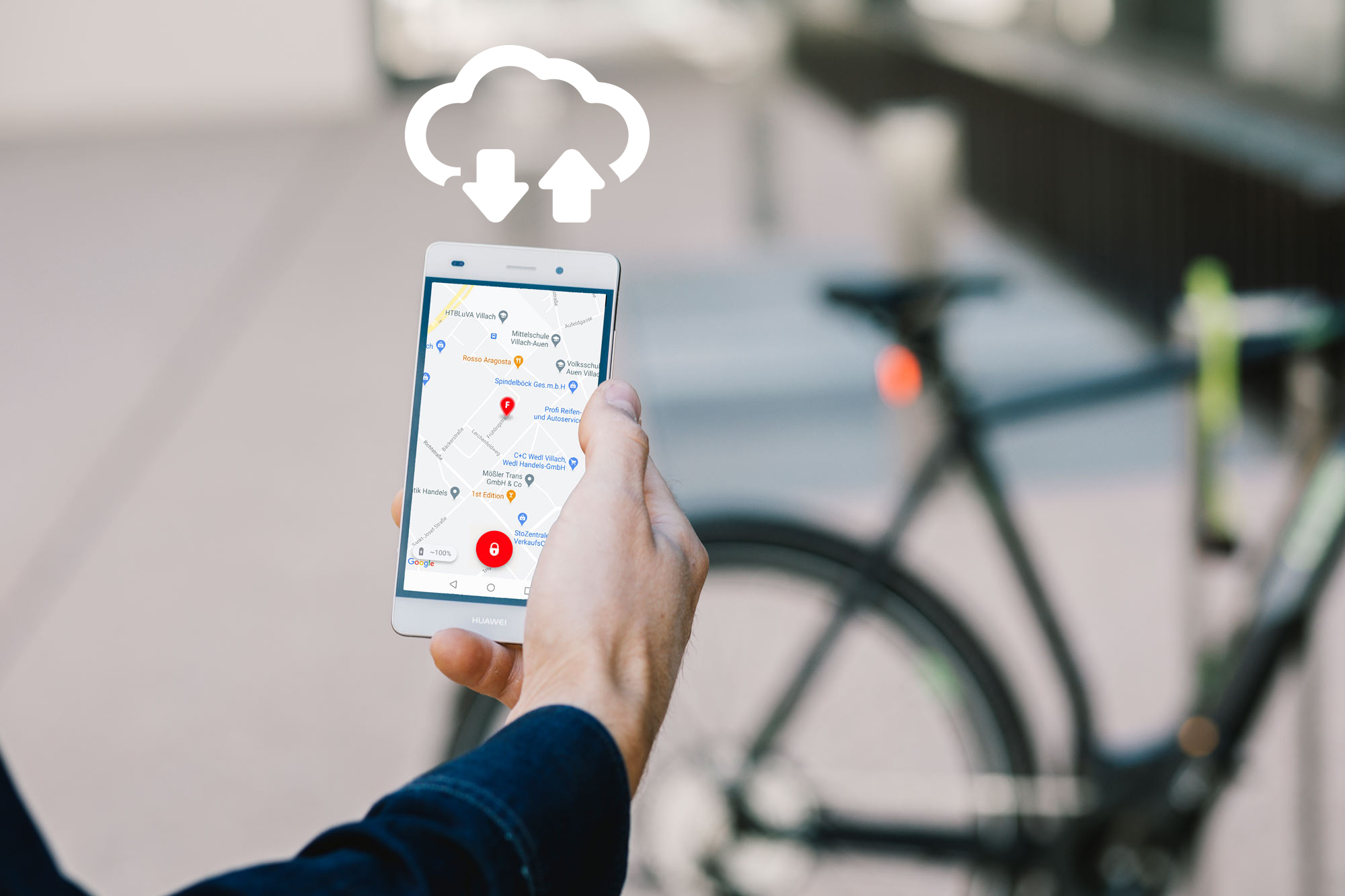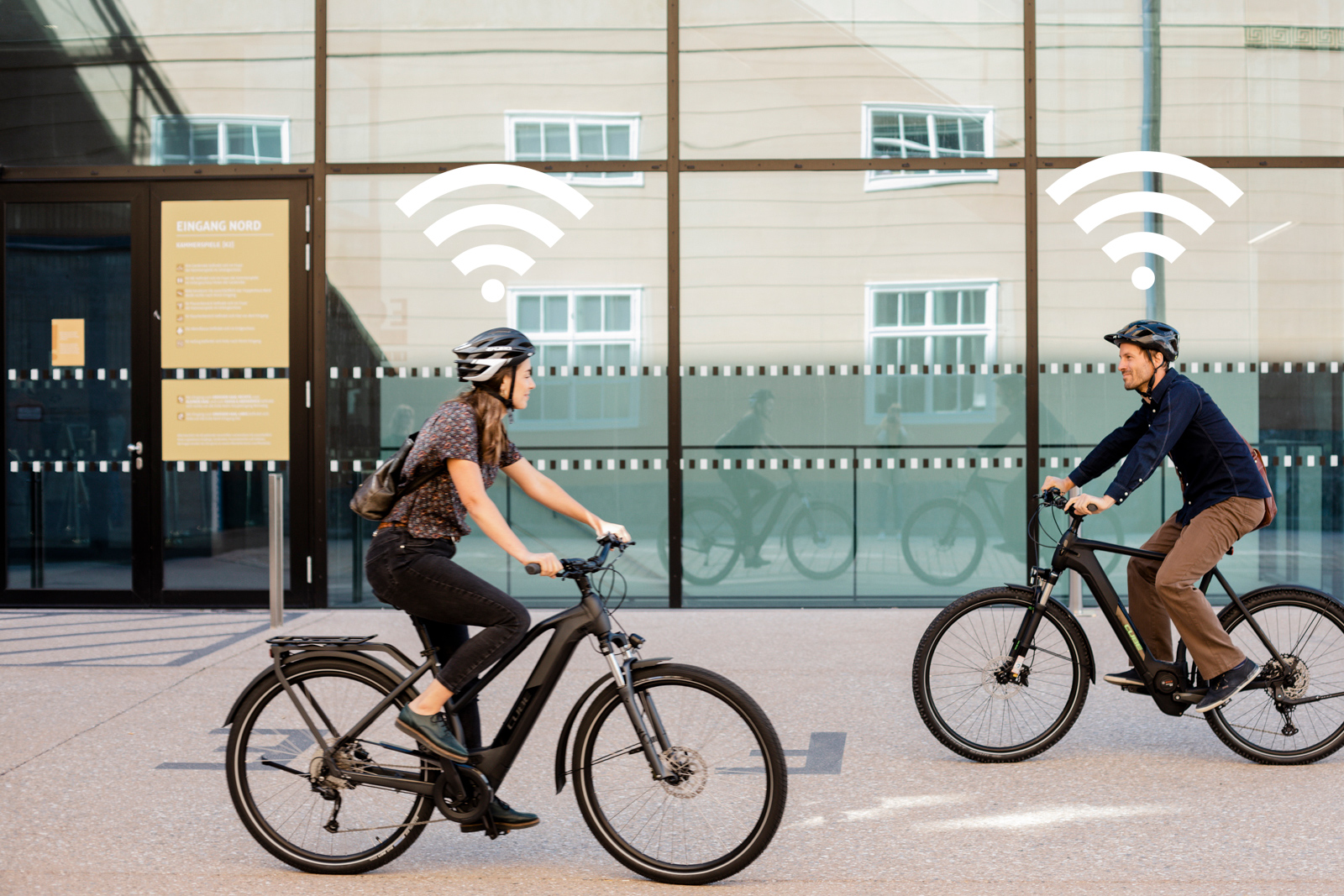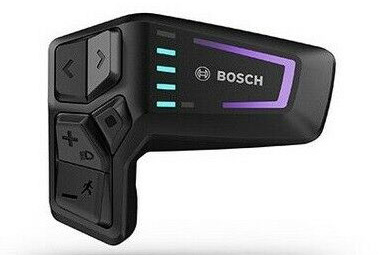- Free shipping from 220€The order of accessories (without BikeTrax) is excluded from the free shipping costs.
PowUnity explains, Special Topic, Top, Topics
Internet of Things, bikes, and GPS tracking: the future is connected!
Inhalt
The Internet of Things and bike GPS tracking in a nutshell
- The Internet of Things (IoT) is characterised by objects exchanging data with each other. The technology is already ubiquitous today. It is likely to become even more important in the future.
- Important components of IoT systems are sensors that collect data and actuators that perform actions. In addition, wireless standards are necessary for the transmission of data. These include, for example, WLAN, Bluetooth, Zigbee, Thread and EnOcean. Wide area networks are used to track moving objects over long distances.
- In connection with bicycles and e-bikes, IoT is particularly suitable for fitness and health functions, theft protection or, for example, data exchange with workshops. GPS trackers such as BikeTrax from PowUnity take e-bike theft protection to a new level by enabling real-time tracking of stolen e-bikes. In the near future, however, it will be replaced by LTE-M.
Thermostats that independently regulate the temperature, washing machines that can be controlled via smartphone and smart speakers – the Internet of Things makes it all possible. IoT is not a new invention but has gained enormous importance in recent years. This is also true in connection with movable objects such as bicycles and e-bikes.
The Internet of Things – a definition
We speak of the Internet of Things (“IoT”) when physical objects are connected so that they exchange data with each other. Based on this data, in some cases, they trigger actions on their own without you having to press a button or give a command.
So IoT technology makes it possible to remotely control objects such as heaters, thermostats, or track objects such as cars, bicycles, etc. Often, you do not need a remote control to do this, just the right app on your smartphone. When many different devices in a home interact with each other, it is called a “smart home.” In addition, IoT is considered an important part of Industry 4.0.
The development of the technology
Terms like smart home or “IoT” sound very modern. In 1990, Simon Hackett, an Australian computer scientist, and John Romkey, a U.S. software expert, connected a toaster to the Internet. The possibilities back then were limited to switching the toaster on and off.
However, IoT did not take off until about ten years later. After that smart home applications such as intelligent refrigerators skyrocketed and still do so. British technologist Kevin Ashton coined the term in 1999.
Today, the said technology is omnipresent, even if we often do not notice it. Experts believe that it will develop even more rapidly in the future and increasingly combine with AI (artificial intelligence). In other words, the future is connected.
Interesting to know:
Today, the smartphone is a practical and popular digital unit for IoT systems. However, experts believe that wearables such as glasses will already replace cell phones to connect the world in a few years.
Components of IoT systems
IoT consists of many components that collect, measure, and analyze data, display and send information, or trigger actions.
For example, the following components are particularly important:
- Sensors: Sensors occupy a key position in the Internet of Things. For example, they sense that something is moving, the temperature is rising, or the humidity is falling. By collecting data, sensors make IoT possible.
- Actuators: As the name suggests, an actuator performs an action. For example, it ensures that the heating is turned down or the roller shutters are lowered. An actuator is, therefore, at the other end of the process than the sensor.
Sensors and actuators have existed before. However, they are connected to each other via a network and to other components of IoT systems such as a microcontroller. This is the only way that a sensor on a thermostat can measure the outside temperature and transport this information to an actuator, which then turns the heating down or up, or that the lights switch on automatically when it gets dark outside.
Of course, the exact workings of IoT systems are more complicated than can be described in short here. You can think of them a bit like a human body, with eyes and ears, a brain, blood or nerve pathways, and muscles that carry out the brain’s commands.
Transmission – wireless standards for IoT
A prerequisite for IoT to work is the constant and wireless transmission of data. After all, a smart home is immediately less convenient if it consists primarily of cables.
For these reasons, manufacturers of IoT devices switch to wireless standards. In the process, various standards compete with each other.
The most important are the following:
- WLAN: When networking and wireless data transmission are mentioned, many people first think of WLAN. Yet, the standard has only been established in the IoT sector since the success of voice speakers. The advantages of WLAN include the transmission of large amounts of data and low costs of devices, while its disadvantages include comparatively high energy consumption.
- Bluetooth: Bluetooth consumes significantly less energy than WLAN and has a shorter range and can transport less data. Better suited for IoT networks is the newer Bluetooth Mesh, explicitly developed for intelligent home and building automation.
- Zigbee, Thread: Zigbee and Thread are low-power standards for IoT technology used primarily in the smart home sector. One difference between the two is that Zigbee requires its software and hub for device communication.
- EnOcean: EnOcean is characterized by its battery-free wireless technology. When using energy-autonomous switches, energy for the radio signals is obtained from the environment (e.g., via solar cells). This also benefits the environment.
- Wide area networks: Conventional standards such as WLAN, Zigbee, or Thread reach their limits, especially when tracking moving products over a longer range. In 2021, GPS trackers will, therefore, rely on radio standards that primarily operate via the mobile network and can transport data over long distances in real-time. In this context, we also speak of wide-area networks. Corresponding standards are also characterized by even having a signal in a building complex. This is crucial if, for example, you want to track an electric bicycle that is parked somewhere in a basement room behind thick walls. We will explain in more detail later how different standards such as 2G, LTE-M, and narrowband IoT (NB-IoT) for the Internet of Things differ for moving objects and what Sigfox and Lora are all about.
Important advantages of IoT
Now we have gone into the “how” but not into the “why”. Why are more and more manufacturers in various industries making an effort to develop digital products connected to each other and the Internet? And why are smart home functions and IoT production processes considered particularly advanced?
Quite simply, IoT combines a number of benefits and services, both personal and professional.
The most important are the following:
- Time-saving: IoT allows you to automate processes that you used to do laboriously by hand. For example, you no longer have to constantly run to the heater at home to readjust the temperature or interrupt a presentation at the office to lower the roller shutters. Companies can speed up processes via smart networking and the automatic collection of data. Some smart machines today work entirely independently.
- More efficiency: Whether in factories, in the office, or at home, the use of IoT is not only saving time but also more efficient. After all, an intelligent system is probably better able to set the right temperature or adjust the lighting than a human being, based on the data it collects. In addition, the constant collection of data opens up many opportunities to constantly optimize processes in companies. There is also less error rate when machines perform a job, at least when it comes to repetitive tasks.
- Energy-saving: Due to their efficiency, IoT saves energy, e.g., in heating, lighting, or manufacturing processes. Of course, this does not apply equally in all cases. After all, IoT technologies also need electricity. In this respect, the radio standard, among other things, is key.
- More security: The Internet of Things is also playing an increasing role in security management. Hidden cameras and motion detectors can capture and pass on information. This allows actions such as an alarm to be triggered. Some smart home solutions simulate presence by artificially generating dog barking and switching on the lights – ideal for deterring burglars during your vacation. Intelligent fire protection systems combine fire detection and evacuation systems, collect video images and send information to the fire department. For movable vehicles such as motorcycles and e-bikes, GPS trackers have become the new standard in theft protection. For example, they can detect whether an e-bike or motorcycle is being moved without permission through an acceleration sensor and send a motion alarm to a smartphone.
The Internet of Things and bicycle GPS tracking
We have already hinted at it: IoT does not only play an important role in a smart home, company, or industry. Nor is it limited to objects that remain in the same place or room.
The said technology is also being used in vehicles. For example, sophisticated software and interconnected systems are now standard equipment in many cars and trucks. This is the only way modern assistance systems work. For autonomous driving, which will shape reality on the roads in the foreseeable future, the communication of objects and thus the Internet of Things is a basic prerequisite.
When talking about IoT, cars are referred to as connected cars. Also, the connected bicycle has made its mark in the bicycle industry.
IoT and e-bikes – how the technology is being used
First of all, IoT means the same in the bicycle sector as it does in the smart home: here, too, new functions are based on devices exchanging data with each other. First and foremost, any on-board computer or unit such as a GPS tracker communicates with the bike owner’s smartphone. There are also initial, promising approaches to integrating sensors on the hardware of e-bikes into the network.
What can be achieved in this way? Currently, the following applications play a central role in the usage of IoT for e-bikes:
Route planning and recording
Whether you choose to navigate via an on-board computer, record your routes with a GPS tracker, or view your tour data such as altitude, distance, speed: IoT for e-bikes is in high demand, and it is hard to imagine cycling tours without them. The convenience offered by a smartphone-connected bike is becoming increasingly popular. And not just among consumers, but also among companies: For example, when delivery services leave their route planning and recording to an IoT system, you no longer have to search for directions yourself.
Fitness and health functions
Cycling is a popular endurance sport. You can also work out on an e-bike. If you are connected to your vehicle IoT system via an app, you can even use it to track your daily exercise routine. How many kilometers did I ride today/week/month/year? How many meters of altitude did I cover? E-bikes also determine data such as cadence and use it to calculate energy consumption. In the app, you can then see your progress or success points at a glance. IoT systems can also help you achieve personal health goals. If you like, you can also share this progress on social media, with friends, or with training partners.
Security and theft protection
An expensive e-bike gains attention from thieves. Several high-quality locks do not deter experienced thieves. If in doubt, they will hijack your bicycle in a van and pick the lock later. That is why GPS trackers have become the new standard in the security of bikes, especially for e-bikes. With the help of GPS units, you can see immediately if your bike is moving without permission and can track its live location.
But, your own safety plays the most significant role. The connected bike transmits your position to the IoT app at any time. If you share your location with family or friends around the world, everyone knows that you are on the road or – in the event of an accident – that you are not. If you are on a bike ride with a group, you can connect with everyone via GPS apps and even share information within the app.
The magic word: communication
You can also connect with service providers as an e-biker within an IoT app. For example, if your bike is stolen it is possible to send a theft report to the police station in your area directly via the app. Insurance contacts can also be linked to the IoT application. If you have an accident or your e-bike is damaged, you can quickly contact them via the app. Last but not least, e-bike manufacturers can transmit e-bike data and cycling preferences to your trusted dealer via IoT solutions with your consent. This way, your dealer service can be optimally prepared, and maintenance of the e-bike and its components can be planned. Dealers could even check the condition of tires or brakes on the bike via remote diagnosis in the app and notify the customer when maintenance is urgently due. Admittedly, with a few exceptions, the latter is still just a dream of the future. The situation is different with GPS tracking of electric bicycles.
In focus – GPS tracking on e-bikes
GPS trackers can be used to track all kinds of moving objects. That is why the devices are used in cars just as much as in motorcycles, bicycles, or trucks. The industry sector and the logistics management use them to optimize routes.
IoT technology is also particularly popular with e-bike cyclists. There is a simple reason for this: an e-bike is generally a costly purchase, popular among thieves, and difficult to secure. Conventional security methods such as locks and alarm systems do help to make theft more challenging. But they often cannot prevent it.
This is where the key advantage of a GPS tracker comes into play: You can track your e-bike in real-time and follow it live via app if it is already stolen. So the chances are high that you will get it back after a theft.
How the theft protection works
The way a GPS tracker works to protect against theft is simple:
- You attach the tracker to your e-bike. Devices that are hidden inside the bike rather than visible on the bike have a decisive advantage.
- Modern trackers are connected to your smartphone via a dedicated app from the same manufacturer.
- From now on, you can track where your e-bike is on this app. In addition, good systems notify you as soon as your bicycle moves without permission.
- Depending on the manufacturer, the app comes with additional functions such as a bike pass, which you can use to prove that the bike is yours.
The location of your e-bike is determined via satellites. You can learn more about the technology and how it works in our article about the history and functionality of GPS tracking.
Important: The GPS tracker does not send live location data about your e-bike directly to your smartphone but first to a server. This has two advantages:
- Data is cached just in case.
- You can access it via the app and via another end device such as a laptop or tablet.
Good GPS trackers such as BikeTrax are mounted hidden in the e-bike and offer all the necessary features such as motion alarm, BikePass and many more.
2G, LTE-M, NB-IoT: a comparison of wireless tracking technologies
As already mentioned, neither WLAN nor Bluetooth or EnOcean are suitable for tracking moving objects.
Instead, radio standards are required that enable tracking over greater distances and through thick walls.
- 2G: 2G refers to the second-generation mobile communications standard. In the meantime, of course, there is a whole range of successors, which above all allow higher bandwidth. However, the decisive advantage of 2G is the extensive network coverage. After all, “holes” in the connection are fatal if you want to track a stolen e-bike. Bandwidth does not play a major role if you want to track your bike after a theft. With 2G, in contrast, you have network coverage worldwide, even in remote places outside the big city.
- LTE-M: As soon as the necessary network coverage is available, LTE-M will become the successor to 2G. The technology scores with low power consumption, long battery charging times, and good signal even through thick walls.
- Narrowband IoT: Narrowband IoT is a technology developed specifically for the Internet of Things. It is characterized by advantages such as great signal even in a complex of buildings. The technology is therefore very well suited, for example, to equip computers and industrial machines, e.g., non-movable objects located in industrial halls in cities. In large cities, the current network coverage for NB-IoT is mostly given. However, network coverage lags once you move out of the city and into the countryside. If you want to track moving objects like bicycles or cars after a theft, narrowband IoT is not suitable because data cannot be transmitted in real-time with it.
The particular case of Sigfox and Lora
Two other terms are often used when talking about wireless standards and IoT technology: Sigfox and Lora. Unlike the standards mentioned above, these do not use the licensed frequency spectrum. Their networks, therefore, have to be completely rebuilt and are based on their own frequency ranges. As a result, transmission costs are lower, and energy efficiency is higher. However, the network coverage is far from sufficient for tracking e-bikes or other moving objects over longer distances.
IoT holds great potential
Some people are afraid of a future in which cars adjust speed autonomously, air cabs populate the air, and we “communicate” with our refrigerators via glasses. But strictly speaking, many things in Germany are reality today that most of us could hardly have imagined five years ago. Furthermore, IoT technology has huge service potential to make life more pleasant and safer and work more efficiently. Whether through smart lighting systems, automated processes in the industry, or modern assistance systems in cars or electric bicycles.
GPS tracking plays a central role in IoT solutions. A tracker is an optimal interface in both industry and connected objects like cars and e-bikes: a small installed unit that can quickly transmit data from the connected object to your smartphone, other computers, or servers.
According to Bosch E-Bike Systems, it will not be ten years until every second bike will be a connected bike. That is hard to doubt because a connected e-bike is where the need for environmentally friendly, alternative transportation meets the convenience that a today’s discerning cyclist wants in things like smart route recording. A digital GPS anti-theft system is also an immense upgrade to the classic mechanical lock – at the latest when the bike is no longer in its place despite the lock. Which IoT system should you choose for your bike or e-bike? You can find tips on selecting GPS trackers for bikes in the following article.
GPS tracker: the optimal interface for IoT applications
A GPS tracker is the optimal IoT interface for connected objects like e-bikes: Manufacturers install a small unit that can quickly transmit small data from the connected object to your smartphone. This allows you to locate your e-bike live, transfer e-bike specific data, see the routes you've taken, use the tracker as an anti-theft device, etc. The possibilities are endless, but the technologies behind them are very complex.
How can objects be connected to each other and to the internet? Which technologies are suitable for which applications? In our technology series, we'll tell you about the "Internet of Things", you'll find out how GPS tracking can connect your e-bike and which technologies you can rely on.
Share article!





 Deutsch
Deutsch